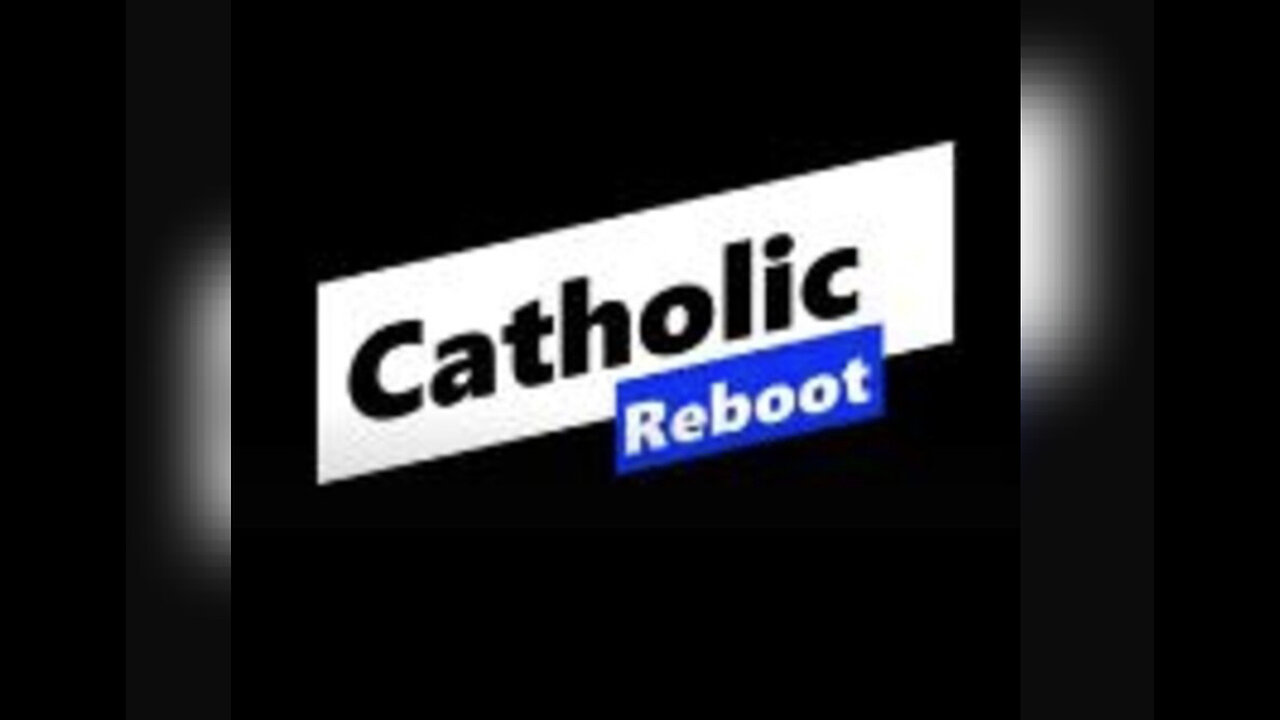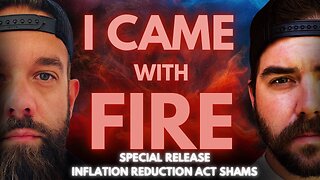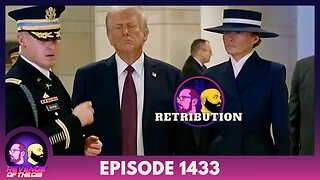Premium Only Content

Episode 2144: Helmet of Hope - By Nancy
It Started with the “Helmet Quote.” 1 Thessalonians 5:8 (1st Epistle of St. Paul to the Thessalonians)
I heard in one of Walt’s recent podcasts a quote from St. Paul which referred to wearing the “helmet of hope.” This stuck with me - it’s a great visual, isn’t it? Especially when you are on a faith journey and continually looking for ways to express your feelings and thoughts. My next step was to look up the quote and I found it to be a part of a longer phrase which is, “But let us, who are of the day, be sober, having on the breastplate of faith and charity, and for a helmet the hope of salvation.” Nice! The added visual of the breastplate of faith and charity along with the helmet of hope, reminds me of the daily struggle; the battle against evil and all the temptations we face in our world today.
Now I took it one step further. Where is the quote from? It is from a letter, an epistle, that St. Paul wrote to the Thessalonians; his first of two. At this point I am pulled in. I need more background information, some history. Who were the Thessalonians and why was St. Paul writing to them? What else did St. Paul say in this letter? And where in the world is or was, Thessalonia?
Okay, now I’m not completely clueless here. I know about St. Paul’s conversion and I’m sure that his letter to said Thessalonians covers conversion along with some advice. He’s written a letter to them so he obviously knows the Thessalonians and has been with them. But now this quote begs for a deeper dive into St. Paul’s words in this letter.
Ah, but now I discover the epistle, this beautiful literary work of St. Paul’s that is much longer than what we would consider to be a letter.
Let me first acknowledge that I am taking a lot of this information from a website, traditionalcatholic.net, which states that the site is a “brief historical survey of Church teaching 100 years prior to the Second Vatican Council.” Since I am looking for history, I am hoping this is satisfactory in my research for this blog entry.
I found some wonderful history on this epistle on this website that I would like to share.
- St. Paul did preach successfully at Thessalonica which was the chief city of Macedonia (which, by the way, is in what is now northern Greece
- It is said that St. Paul was driven out of the city by those who did not want him there converting the Thessalonians
- St. Paul had two companions, or coworkers, who were helping him: Silvanus and St. Timothy, and St. Paul left them there to continue his work
- The epistle is thought to have been written from Corinth (southern Greece) in about the year 52 AD
- This letter to them was more than just a follow to his visit; St. Paul wrote “to confirm the Christian faith and the practice of virtue” as well as to encourage and praise the Thessalonians
- St. Paul’s entire epistle is filled with expressions of love and tenderness for his “spiritual children” along with instructional and inspiring words for them to follow and keep with them
Back to the epistle, which can be found in its entirety on this website, all five chapters written in Latin and English side by side - really cool.
Yes, chapters. They are very short chapters, more like sections, really, but they contain such amazing and beautiful words.
According to traditionalcatholic.net, the first three chapters St. Paul wrote were to confirm and comfort the Thessalonians against the temptations of persecution; the other two are to exhort them to live up to the precepts he delivered to them.
Okay, now the quote I started this with (helmet of hope, remember?) is actually found in the very last chapter - in those words of motivation and encouragement. Here’s the thing - the context in which that one quote is written needs to be brought to the forefront as well. You have GOT to read this epistle. I could read it to you but it just doesn’t seem right. You need to read these words on your own; let them affect you the way they are supposed to affect YOU.
Maybe it’s knowing the person St. Paul (who was formerly Saul of Tarsus) was before his conversion that makes these words even more powerful? He was indeed a violent man who literally hunted down and dragged out followers of Christ for imprisonment or to be killed. But God spoke to Saul in the way in which He knew Saul would understand, in a kind of violent way of its own. We know he was on the road to Damascus when the extremely bright light caused Saul to fall off of his horse and he was struck blind. He remained that way for three days until a man named Ananias was sent by Jesus to cure Saul. Talk about a rude awakening, but considering the man Saul was, it is understandable he would need a wake up call of this magnitude. So perhaps it is in knowing about St. Paul's background makes his writings more than just words on a page but rather the way in which we are to live our lives.
So I conclude with my "helmet quote" - as St. Paul wrote in 1 Thessalonians 5:8: "But let us, who are of the day, be sober, having on the breastplate of faith and charity, and for a helmet the hope of salvation."
Thank you for reading.
Two side notes:
1) I discovered this is also the text where St. Paul tells us to “pray without ceasing.”
2) In reading one of many accounts of the story of the conversion of St. Paul, I came across this on the catholicexchange.com website:
“In fact, Saul was a witness to the stoning of the first Christian martyr, St. Stephen. Because Saul was a leader, he stood by and watched as those stoning Stephen laid their cloaks at his feet. It’s very likely that Saul ordered Stephen to be stoned.
Saint Luke’s recording of this story in his book of Acts is not merely an historical account. While drawing his last breath, Stephen called out to God to forgive those that were stoning him. St. Augustine later declared that had Stephen not prayed, the Church would have never had the great Apostle Paul. For it was Stephen’s prayer that planted the seed which later helped Saul on his path to conversion.”
-
 52:01
52:01
Tucker Carlson
14 hours agoNew York Mayor Eric Adams Sounds a Lot Like a Trump Voter
219K185 -
 2:47:25
2:47:25
Right Side Broadcasting Network
13 hours agoLIVE REPLAY: President Donald J. Trump Holds First Press Briefing Since Inauguration - 1/21/25
247K212 -
 1:08:45
1:08:45
Man in America
12 hours agoTrump UNLEASHED! Dismantling the Deep State and Restoring America
49.7K47 -
 27:22
27:22
I_Came_With_Fire_Podcast
14 hours ago🔥SPECIAL RELEASE🔥 Inflation Reduction Act: American Seniors Get SLAMMED!!
58.2K10 -
 6:25:28
6:25:28
vivafrei
13 hours agoD.C. Gulag Jan. 6 Prisoners Release Watch!
229K111 -
 1:49:14
1:49:14
Redacted News
12 hours agoTrump is Back! Congress Uncovers New Biden Crimes One Day After He Leaves D.C. | Redacted
197K255 -
 2:09:53
2:09:53
Benny Johnson
12 hours ago🚨President Trump LIVE Right Now Making MASSIVE Announcement At White House News Conference
305K435 -
 2:04:10
2:04:10
Revenge of the Cis
13 hours agoEpisode 1433: Retribution
134K21 -
 1:42:50
1:42:50
The Criminal Connection Podcast
16 hours ago $1.30 earnedEddie Hearn talks JOSHUA vs FURY, Working With Frank Warren & The Truth About Turki Alalshikh!
68K2 -
 1:00:25
1:00:25
In The Litter Box w/ Jewels & Catturd
1 day agoGolden Age | In the Litter Box w/ Jewels & Catturd – Ep. 724 – 1/21/2025
156K84